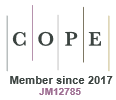Consumer involvement; the system says ‘No.’
Kylie Hill A * , Sarah Hug A B , Vinicius Cavalheri A C and Ben Horgan DA
B
C
D
Abstract
The importance of authentic consumer engagement to shape decisions in health care is now well recognised. Both the National Health and Medical Research Council and Cancer Council conceptualise consumer involvement as a process that requires consumer capability and organisational capacity and emphasise that organisations should commit to acting on outcomes that have involved consumers. In this perspective piece, we share our experience of working with consumers to develop strategies that aimed to optimise referrals to an evidence-based and cost-effective intervention; a pulmonary rehabilitation program. Although we were successful at implementing some of the co-design strategies and were able to demonstrate an increase in referrals, we were surprised that many of the strategies, which were seemingly simple, could not be implemented due to bureaucratic barriers. Based on our experience, given their ability to navigate bureaucratic barriers within the system, future health researchers should consider actively recruiting senior hospital staff to be part of the co-design process from project inception.
Keywords: bureaucracy, co-design, healthcare, implementation.
References
1 Higgs K. How the world embraced consumerism. BBC; 2021. Available at https://www.bbc.com/future/article/20210120-how-the-world-became-consumerist [cited May 2024].
2 National Health and Medical Research Council. Consumer and community engagement. 2024. Available at https://www.nhmrc.gov.au/about-us/consumer-and-community-involvement/consumer-and-community-engagement [cited May 2024].
3 Australian Commission on Safety and Quality in Health Care. Australian charter of healthcare rights. 2020. Available at https://media.healthdirect.org.au/publications/Australian-Charter-of-Healthcare-Rights.pdf [cited May 2024].
4 Sherlock R, Wood F, Joseph-Williams N, et al. “What would you recommend doctor?”-Discourse analysis of a moment of dissonance when sharing decisions in clinical consultations. Health Expect 2019; 22(3): 547-554.
| Crossref | Google Scholar | PubMed |
5 Mann A, Denis V, Schleicher A, et al. Dream Jobs? Teenagers’ Career Apirations and the Future of Work. 2020. Available at https://www.voced.edu.au/content/ngv%3A85516 [cited May 2024].
6 Hogan AJ. Social and medical models of disability and mental health: evolution and renewal. CMAJ 2019; 191(1): E16-E18.
| Crossref | Google Scholar | PubMed |
7 De Abreu Lourenço R, Devlin N, Howard K, et al. Giving a Voice to Marginalised Groups for Health Care Decision Making. Patient 2021; 14(1): 5-10.
| Crossref | Google Scholar | PubMed |
8 National Health and Medical Research Council. Consumer involvement. 2018. Available at https://www.nhmrc.gov.au/guidelinesforguidelines/plan/consumer-involvement [cited May 2024].
9 Australian Government Cancer Council. Consumer involvement. 2025. Available at https://www.canceraustralia.gov.au/key-initiatives/consumer-involvement [cited January 2024].
10 Hug S, Cavalheri V, Gucciardi DF, Norman R, Hill K. OPTImising the implementation of pulMonary rehAbiLitation in people with chronic obstructive pulmonary disease (the OPTIMAL study): mixed methods study protocol. BMC Pulm Med 2020; 20(1): 286.
| Crossref | Google Scholar | PubMed |
11 Leask CF, Sandlund M, Skelton DA, et al. Framework, principles and recommendations for utilising participatory methodologies in the co-creation and evaluation of public health interventions. Res Involv Engagem 2019; 5: 2.
| Crossref | Google Scholar | PubMed |


